Trimbakeshwar Jyotirlinga Temple: A Journey to the Abode of Lord Shiva
Trimbakeshwar Jyotirlinga Temple Lord Shiva’s holy home sits just 30 kilometers from my doorstep in Nashik, a sacred call I’ve answered since childhood. Last Sunday, I revved up my Activa at 6:30 AM, friends in tow, and rode to Trimbak, reaching by 7:45 AM. This isn’t just a temple; it’s one of the 12 Jyotirlingas, a dharmik heartbeat nestled at the Brahmagiri foothills where the Godavari begins. I’ve dipped in Kushavarta Kund as a kid, but this time, with a ₹200 VIP pass, I felt its grace anew 30 minutes in line, a climb up 700 stairs to Gangadwar, and a day wrapped in devotion. Here’s my journey personal, peaceful, and steeped in Nashik’s soul.
My Sunday Ride to Trimbakeshwar
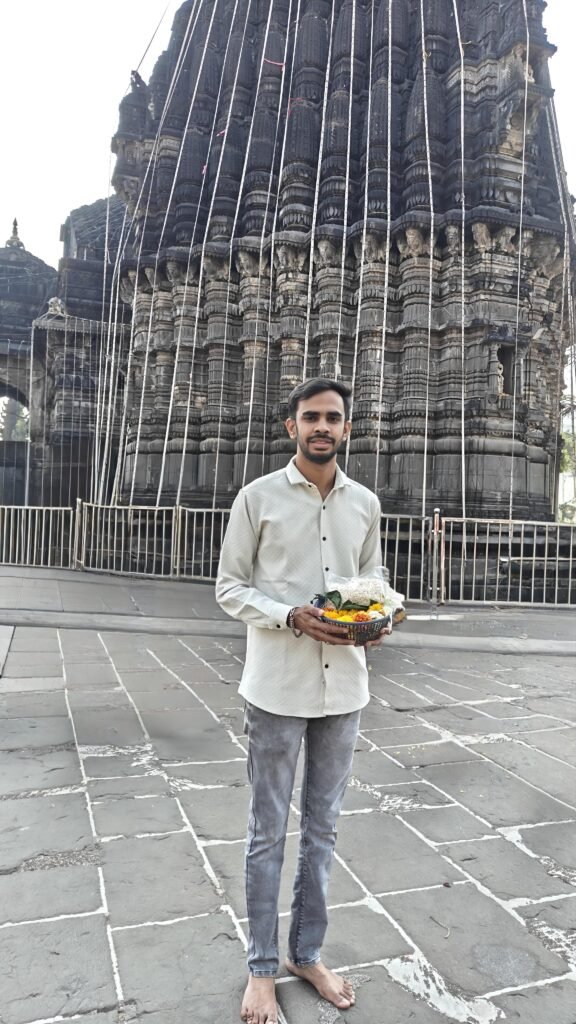
The sun was barely up when I kicked off from CBS, Nashik, my Activa humming under me. Friends piled in some on bikes, some hitching rides and we hit the Nashik-Trimbak road, 30 kilometers of smooth turns and morning mist. By 7:45 AM, Trimbakeshwar Jyotirlinga’s black-stone spire peeked through the trees, Brahmagiri looming behind. I’ve ridden here since I was a boy 30 minutes from home—but every visit stirs my heart. This Sunday, with a ₹200 VIP pass in hand, I knew it’d be special a sacred escape to Lord Shiva’s embrace.
Kushavarta Kund: A Holy Dip
We parked near Kushavarta Kund first a sacred pool cradled in the temple complex, its waters cool and pure. I took a dubki, dipping under as the Brahmagiri’s blessings washed over me. My shirt clung wet, but my spirit felt light legend says this is where sins dissolve. Friends splashed beside me, their laughter soft, mindful of the dharmik air. At 18 meters wide, Kushavarta’s stone edges hold centuries of prayers I’ve bathed here as a kid, but this time, it was a quiet start to our Trimbakeshwar darshan.

Darshan at Trimbakeshwar Jyotirlinga
By 8:15 AM, we queued up VIP pass cutting the wait to 30 minutes. The temple’s black-stone walls rose around us, carvings of gods whispering history. Inside, the Jyotirlinga glowed three lingams for Brahma, Vishnu, and Shiva, a rare trinity. I folded my hands, lit a diya (₹50 from a stall), and felt Lord Shiva’s peace settle in. The sanctum’s dark, cool only priests touch the lingam but its power hums. We sat in the courtyard after, soaking in the calm for 30 minutes, the 630,000-square-foot complex alive with devotees murmurs.
Climbing Gangadwar: 700 Stairs to Grace

At 9:30 AM, we set out for Gangadwar the Godavari’s source on Brahmagiri. You can drive partway, skipping 550 stairs, but I chose the full 700-step climb friends grumbling but game. It took an hour, sweat on my brow, but every step felt like a prayer. At the top, Gangadwar’s tiny shrine gleamed water trickling from the rock, the river’s birth. The view stunned me: Nashik’s valleys stretching wide, green and endless. We rested there, darshan done, and started down by 11:45 AM legs shaky, hearts full.
A Snack Break in Trimbak
Back in town by noon, we hit a stall near the temple vada pav (₹20 each) and chai (₹10), hot and simple. I’ve eaten here since childhood Nashik’s flavors in every bite. The market buzzed nearby: stalls with rudraksha malas (₹50-₹200), flowers (₹30), and prasad laddoos (₹40). Trimbak’s small, but its spirit’s big locals smiled as I haggled for a mala, a keepsake from this sacred day.
The Sacred Story of Trimbakeshwar
Trimbakeshwar Jyotirlinga dates back to ancient times some say the Pandavas built it during the Mahabharata, others tie it to Sage Gautama’s penance. Lord Shiva appeared here as a radiant lingam, blessing the Godavari’s birth from Brahmagiri. I’ve heard these tales growing up the temple, rebuilt in 1755 by Peshwa Nanasaheb, stands 30 meters tall, its black stone etched with devotion. Three lingams shine in the sanctum a trinity of creation, preservation, and destruction. Every restoration (latest in 2015) honors its dharmik roots Nashik’s pride, Lord Shiva’s home.
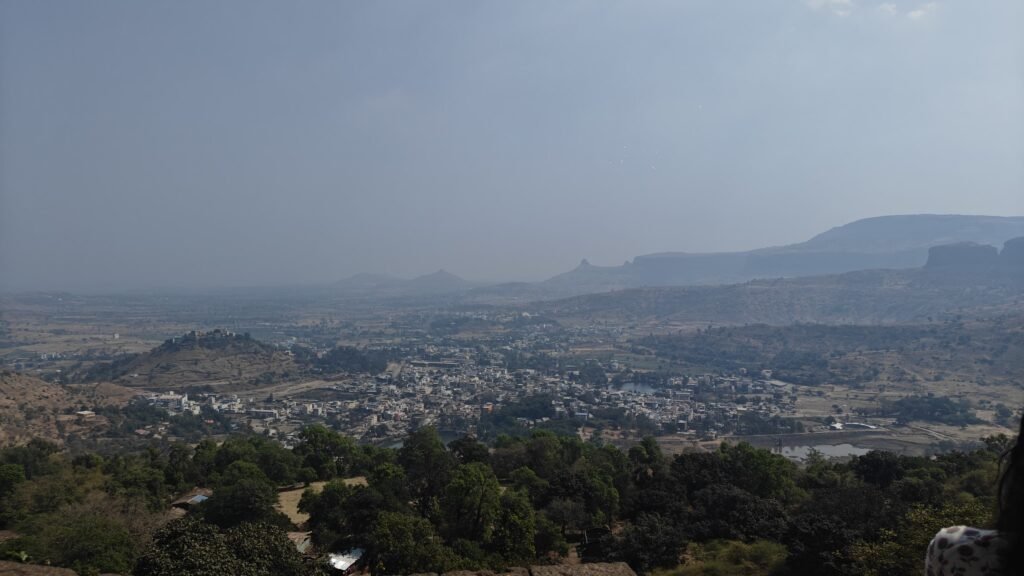
Why Trimbakeshwar Jyotirlinga Calls Me
This isn’t just a temple it’s a Jyotirlinga, one of 12 where Shiva’s light pierces ignorance. I feel it every visit: the lingam’s quiet strength, Kushavarta’s cleanse, Gangadwar’s climb. Mahashivratri packs it thousands chant “Om Namah Shivaya” and the Kumbh Mela (next in 2027) floods Trimbak with millions. I’ve seen it busy, but this Sunday was calm my Activa’s hum, friends’ soft awe, and Shiva’s peace. The carvings gods, flowers, stories tell of artisans’ faith, a beauty that’s dharmik, not just stone.
How to Reach Trimbakeshwar
From my CBS home, it’s 30 km—₹50 fuel on my Activa, 45 minutes. Here’s your way:
- By Scooter/Car: Nashik-Trimbak road 30 km, 45-60 minutes. Free parking near the temple.
- By Bus: ₹50 from Nashik CBS to Trimbak, 1 hour 5-minute walk from the stop.
- By Train: Nashik Road station (40 km) ₹150 taxi, 1 hour..
Start early—6:30 AM beats the rush. VIP pass (₹200) skips hours in line worth it for darshan.
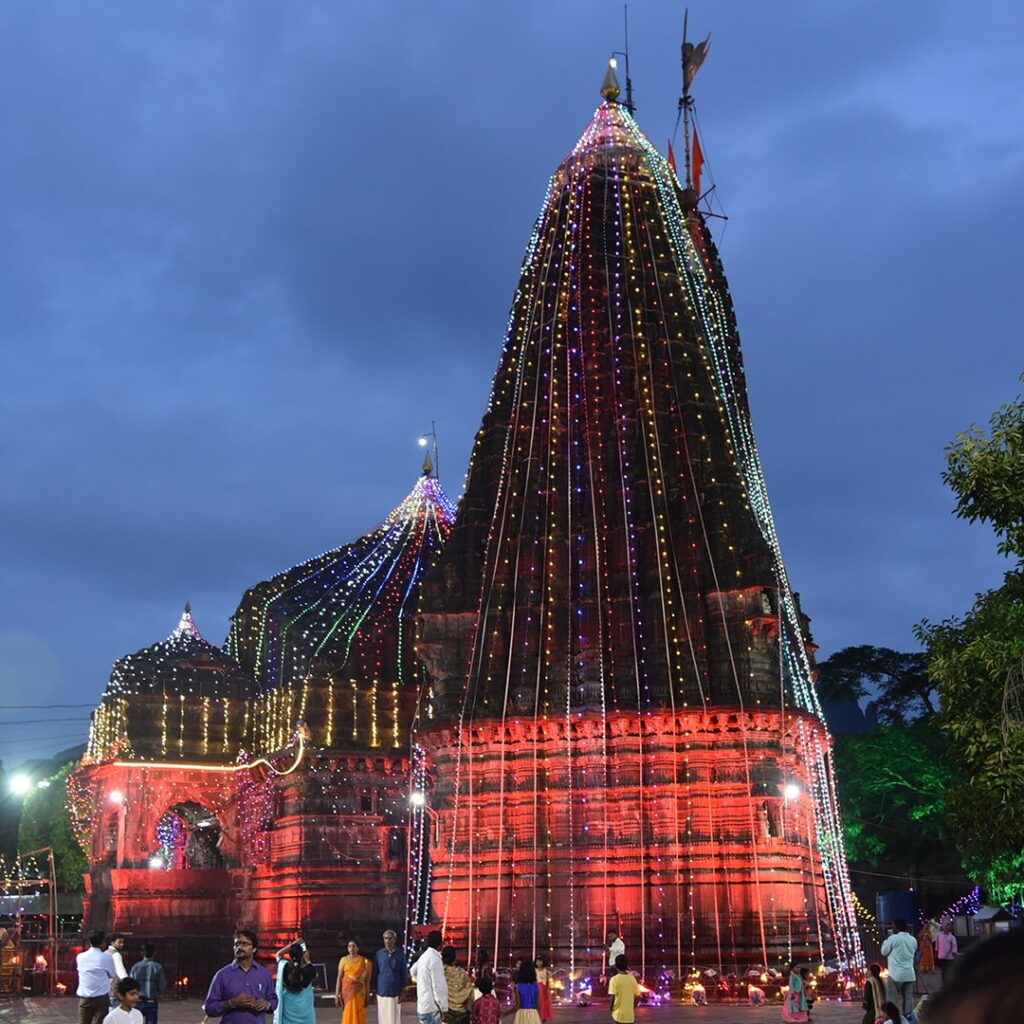
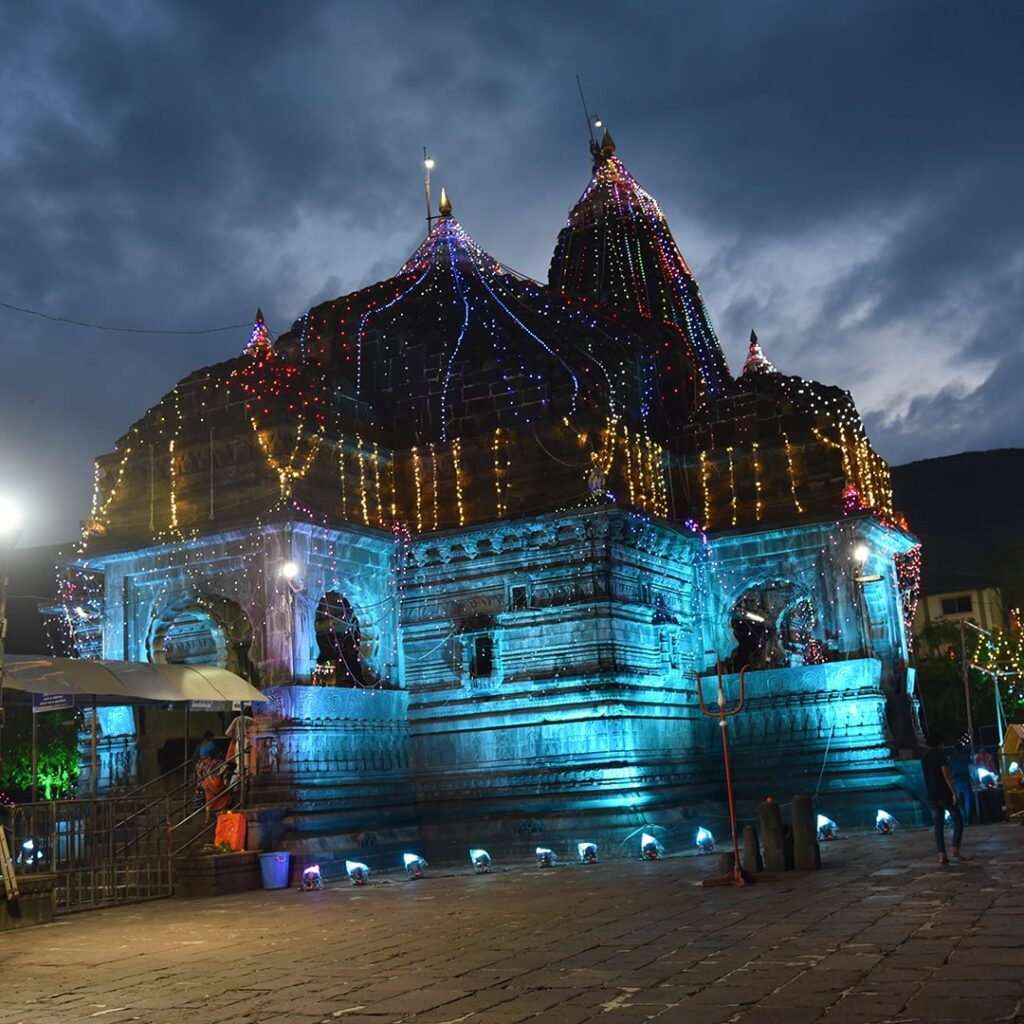
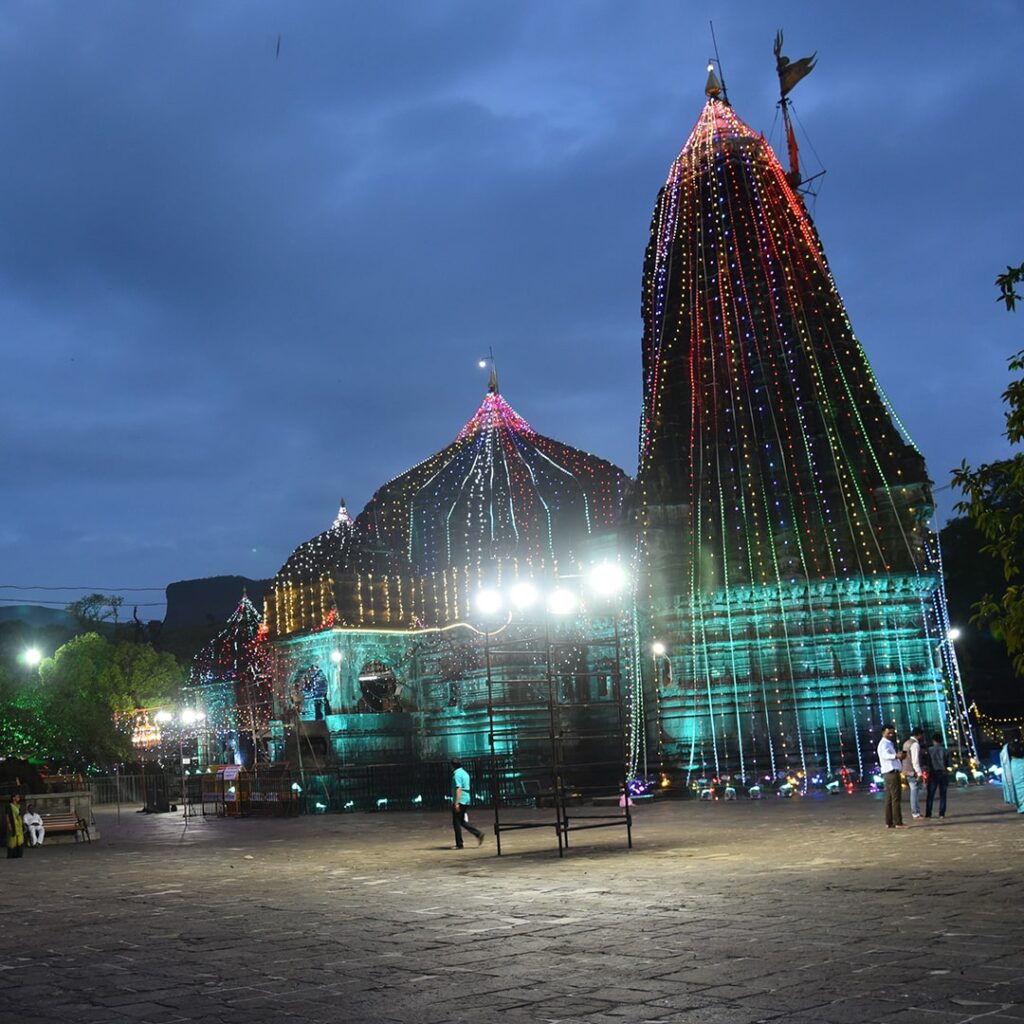
Nearby Sacred Spots & Sights
Trimbakeshwar’s just the start here’s where I roam:
- Anjaneri Hill: 8 km ₹50 taxi, 2-3 hours trek. Lord Hanuman’s birthplace views that lift the soul.
- Brahmagiri Hill: 3 km walkable or ₹30 auto. Gangadwar’s root, a holy climb.
- Gangapur Dam: 20 km ₹80 taxi, 1-2 hours. Godavari’s calm peace after prayer.
- Sula Vineyards: 30 km ₹250 tasting, half-day. Wine and vistas a Nashik treat.
- Trimbak Market: Steps away malas, flowers, prasad. A sacred bustle.
Tips for a Blessed Visit
- Gear: Helmet roads twist. Water 1 liter. A diya or flowers offer with love.
- Timing: 4 AM-9 PM early mornings are purest. Mahashivratri? Plan ahead crowds swell.
- Cost: ₹100-₹300 fuel, snacks, prasad. Entry’s free, VIP pass optional.
- Respect: Shoes off, voices low honor Lord Shiva’s sanctity. I remind myself: “This is dharmik keep it pure.”
Why Trimbakeshwar Jyotirlinga Stays With Me
By noon, we rolled back to Nashik, my Activa dusty, my heart full. Trimbakeshwar Jyotirlinga isn’t just 30 km away it’s woven into my life. Childhood dips, Sunday climbs, the lingam’s glow it’s Lord Shiva’s gift to me, a Nashik boy. That Gangadwar view valleys breathing under the sun stays in my eyes; the temple’s peace stays in my soul. Been here? Felt His grace? Tell me below I’ll ride back soon, Activa ready.
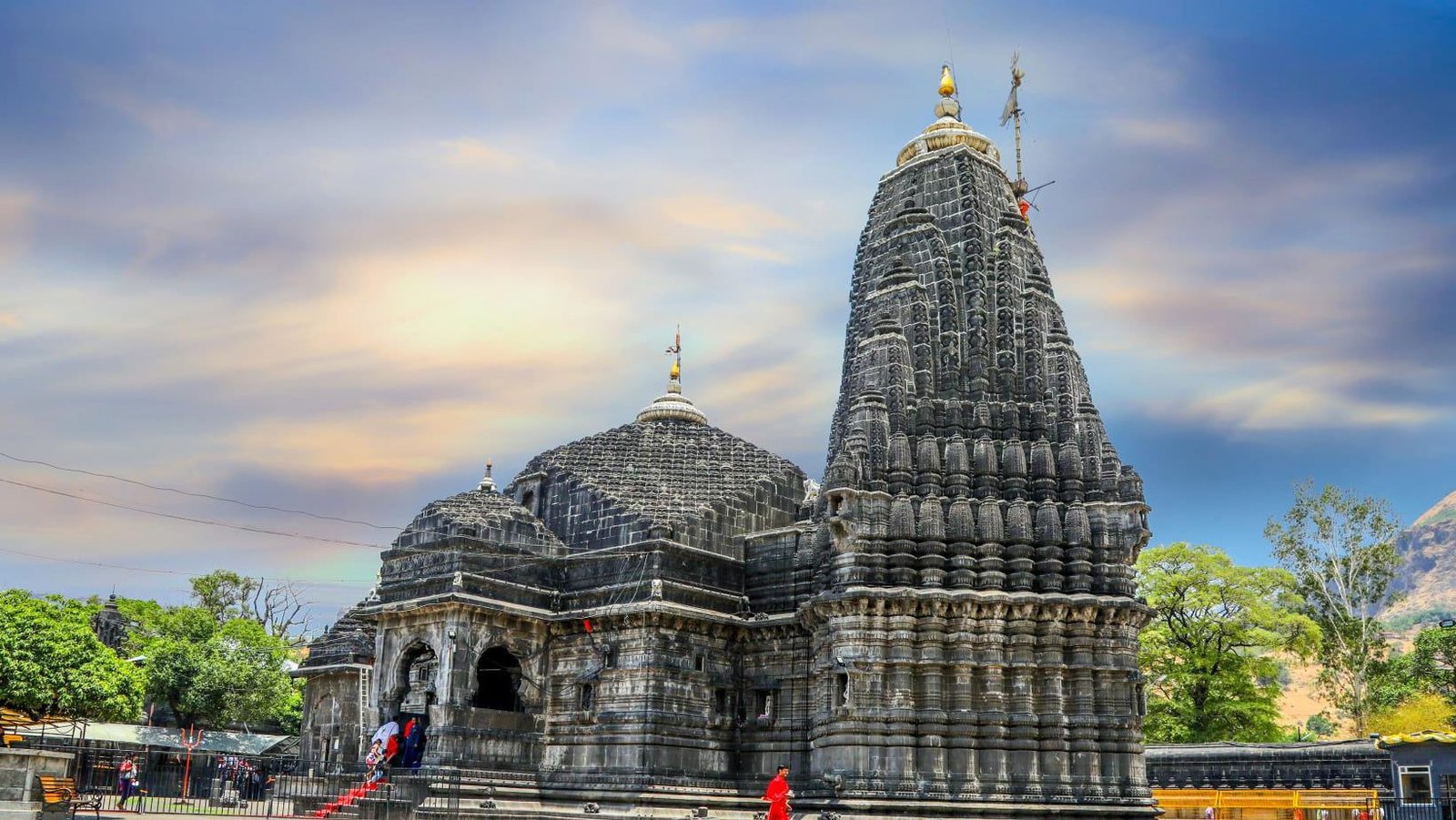
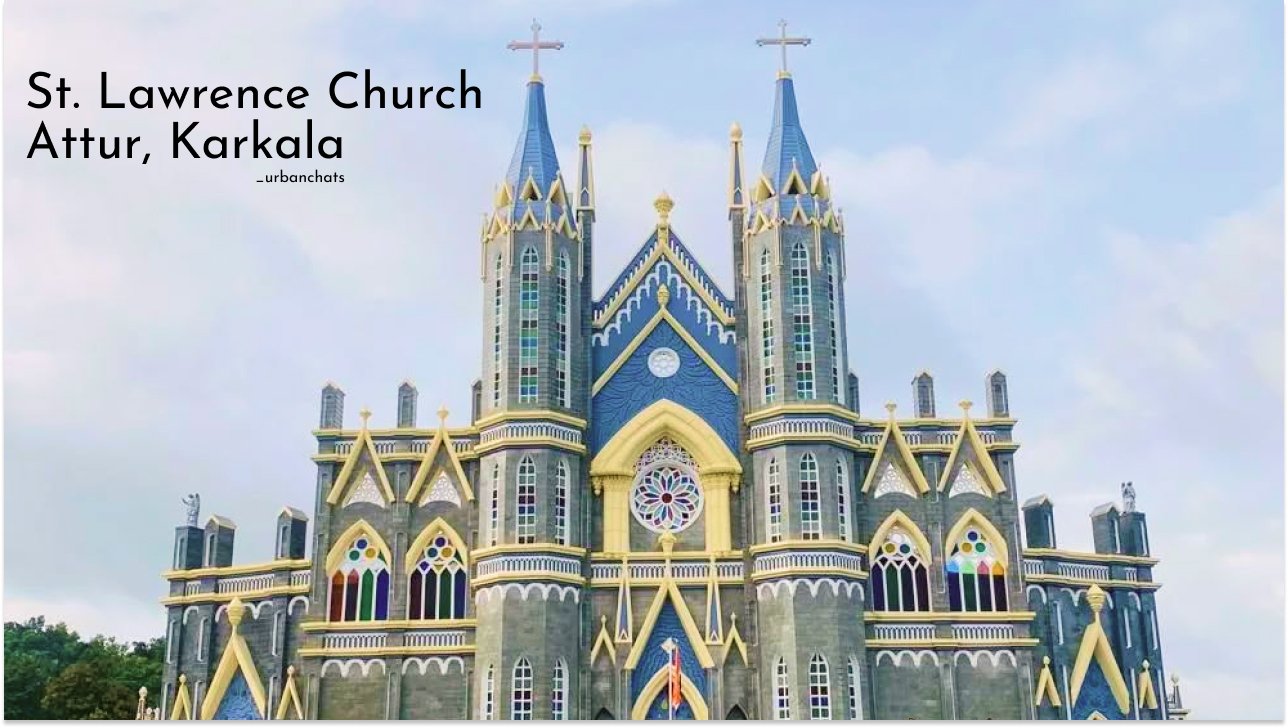


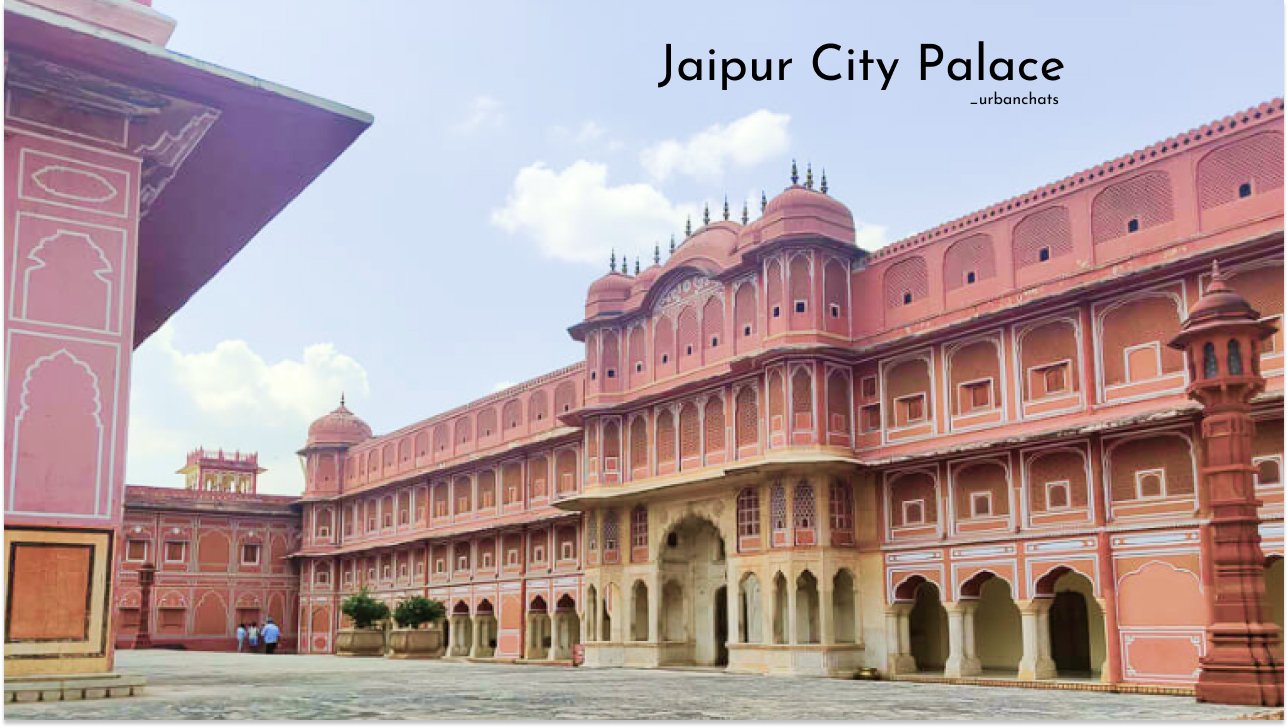
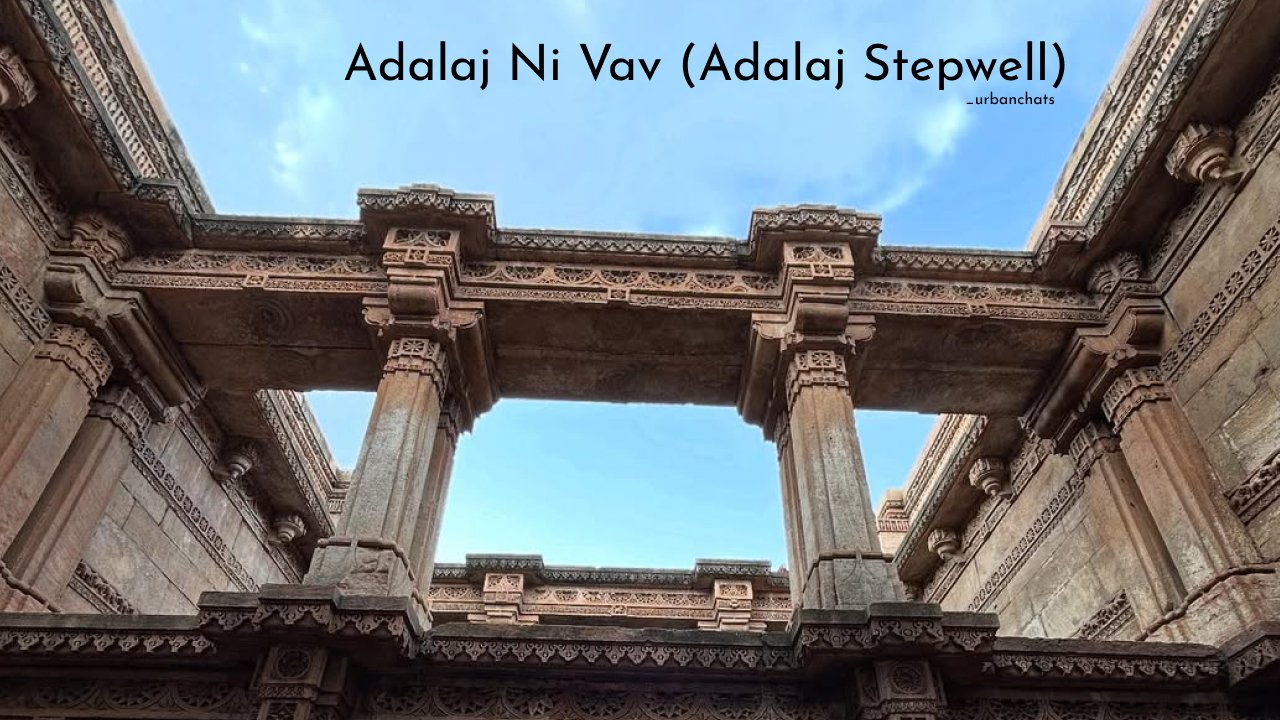
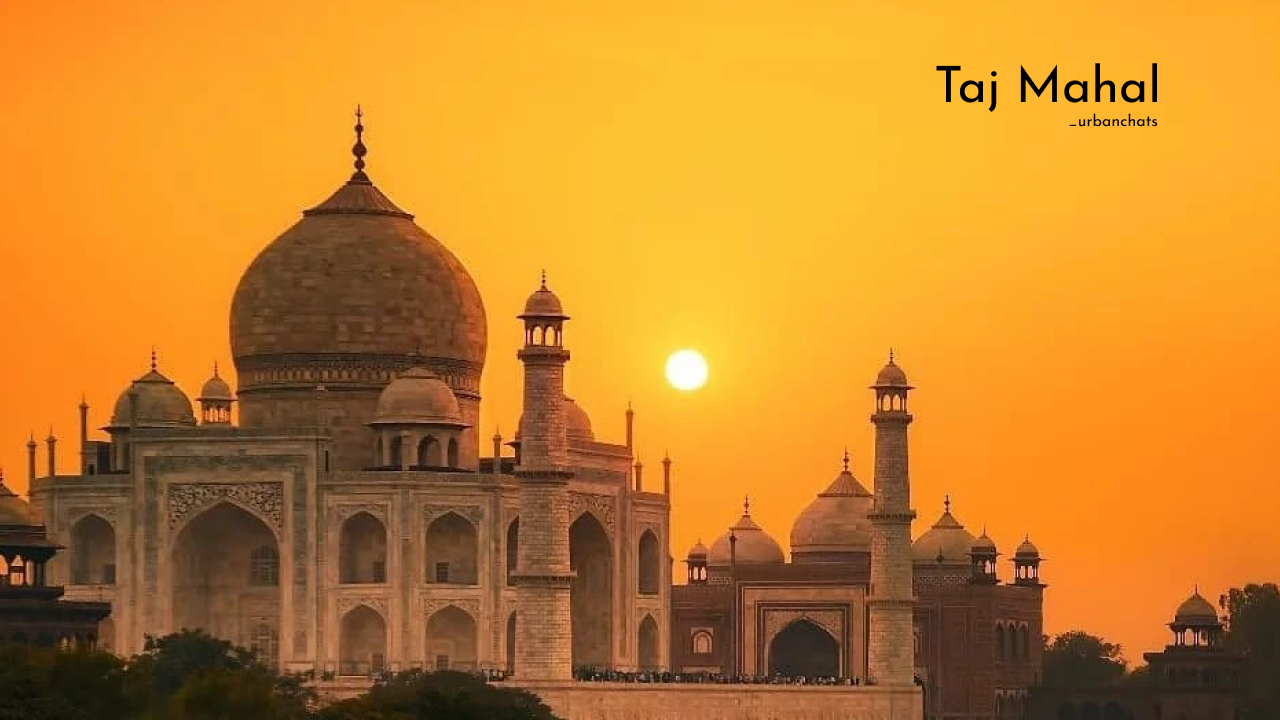


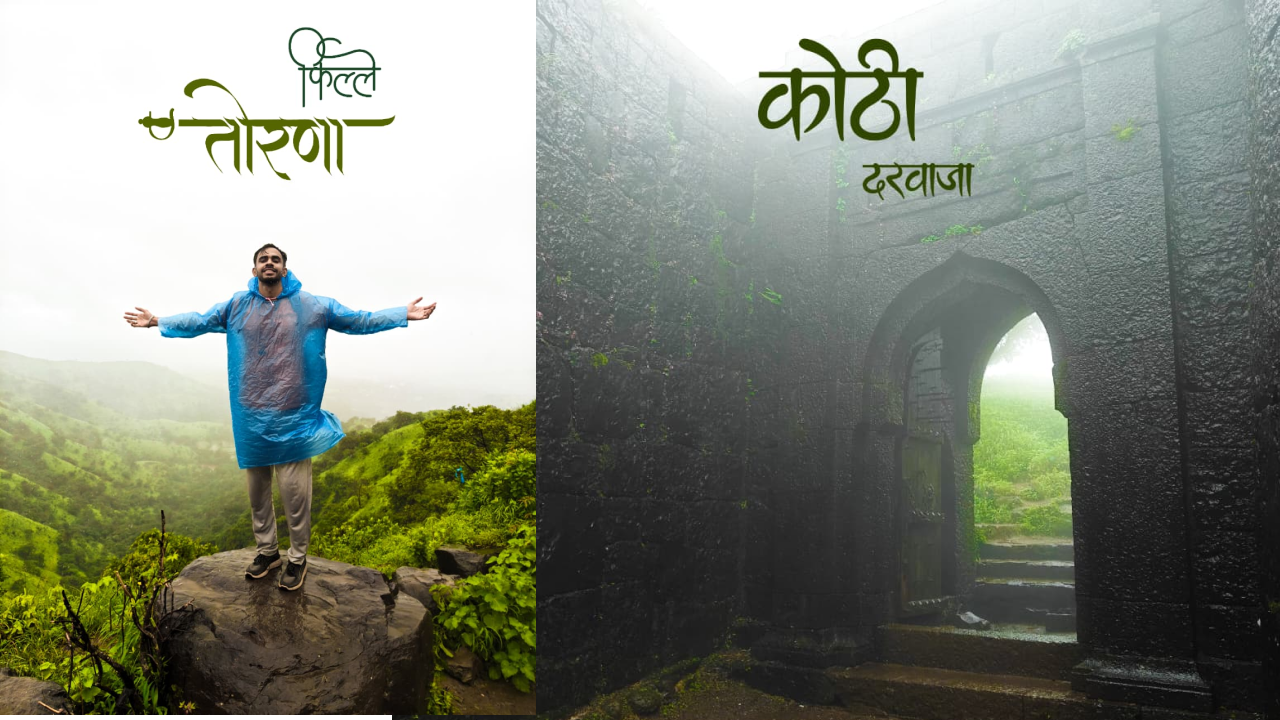


1 thought on “Trimbakeshwar Jyotirlinga: My Sacred Sunday Ride to Lord Shiva’s Abode in Nashik”